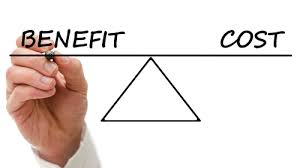The “American family” in crisis: Colonialism, COVID-19 risk, and climate vulnerability
The fight for racial justice must include a reckoning with US imperialism.
The recent spotlight on anti-Black violence has awoken many white Americans to an uncomfortable truth: that underneath its rhetoric of equality, the United States is a fundamentally racist country. The disproportionate impact of COVID-19 on U.S. communities of color underscores this fact. The pandemic also reveals a lesser known but equally uncomfortable truth: that underneath its rhetoric of liberty and justice for all, the U.S. is not only a racist country, but a racis...
CONTINUE READINGThe Scourge of ERRD-16
Evident-Resistant Reasoning DIsorder can strike without warning.
A stubborn disagreement. A misguided tweet or facebook post. A lame remark. Those things can be normal behaviors. But they could be signs of something much more serious: a syndrome called Evidence-Resistant Reasoning Disorder or ERRD-16. This disorder has expanded explosively since a mutated form was introduced by a super-spreader in 2016. This super-spreader is thought to have transmitted the disease directly or indirectly to tens of millions of Americans, including ...
CONTINUE READINGEnvironmentalists v. Cost-Benefit Analysis: What Does the Future Hold?
For now, at least, environmentalists and economists are aligned in criticizing Trump's rollbacks. Will this alliance last?
If it’s true that “the enemy of my enemy is my friend,” environmentalists might want to take another look at cost-benefit analysis. The Trump Administration is certainly doing its best to gut economic analysis of its rollbacks. Both economists and environmentalists are resisting. Is this an alliance of convenience or will it be the start of a beautiful friendship? Even a month into his presidency, Trump’s approach was clear: cost-benefit analysis, but with...
CONTINUE READINGA Black Staffer’s Noisy Exit from a Green NGO
Resignation letter at Union of Concerned Scientists calls out dominant white culture in large environmental organizations
On this Juneteenth, it is fitting to lift up and celebrate a recent, significant emancipatory act that until now has ramified little beyond the niche trade press. I refer here to the dramatic early June exit of 26-year-old Black staffer ruth tyson from the Union of Concerned Scientists (UCS), via letter e-mailed to all staff and also posted on Ms. tyson’s Facebook page. No ordinary missive, this 17-page document—An Open Letter to the Union of Concerned Scientists: On...
CONTINUE READINGLessons from the DACA Ruling
The Court’s ruling could have important implications for environmental cases.
The Supreme Court’s ruling in Department of Homeland Security v. UC Regents was great news for 700,000 “Dreamers” who would otherwise face deportation. It also has important implications for administrative law — and for environmental law cases in particular. Here are three main takeaways. Requiring Reasoned Explanation. Chief Justice John Roberts reinforced the principle that agencies must give reasoned explanations for their orders. As Roberts put it, i...
CONTINUE READINGA New Report on Governing Climate Geoengineering
I suggest steps toward global governance of carbon dioxide removal and solar geoengineering
A new report on the governance of climate geoengineering -- that is, carbon dioxide removal (CDR) and solar geoengineering (or solar radiation modification, SRM) -- has been released. International Governance Issues on Climate Engineering: Information for Policymakers was coordinated and issued by the International Risk Governance Center, edited by IRGC's Marie-Valentine Florin, and commissioned by the Swiss Federal Office for the Environment. Its four chapters were...
CONTINUE READINGNo, It’s Not Over
The threat of COVID-19 continues to loom over us.
We’re all sick of being locked down, and the economic downturn has been brutal. There’s a palpable sense that it’s time to put the coronavirus behind us and move on. Unfortunately, the coronavirus does not agree. People now seem used to the idea of hundreds of new coronavirus deaths a day. Yet, even 500 deaths per day would equate to a 9/11 event every week. And we're still well above that death rate in this country at an average of around 750 deaths daily...
CONTINUE READINGDC Circuit Restricts “Housekeeping” Regulations
The Trump Administration likes to justify policy initiatives based on vague grants of authority. That's just become harder.
Earlier today, the D.C. Circuit Court of Appeals decided two cases that add to the legal difficulties the Trump EPA will face in court. The difficulties relate to two proposed EPA rules that attempt to hamstring future efforts to impose tighter restrictions on pollution. Both EPA rules rely on vague, general grants of rule-making authority from Congress. That just became more tenuous. One of the EPA proposals is the so-called “science transparency rule,” which...
CONTINUE READINGWhat Does Today’s Decision Holding that Employers Can’t Discriminate Against LGBTQ Employees Have to Do with Climate Change?
The case provides potent ammunition for using the Clean Air Act to regulate carbon pollution
Today's blockbuster opinion in Bostock v. Clayton County, Georgia, holding that employers can't fire LGBTQ workers under Title VII of the Civil Rights Act, may seem far afield from the regulation of greenhouse gases under the Clean Air Act. But its reasoning could have huge implications for climate change action. In saying that discrimination on the basis of sex under Title VII should be read to include discrimination on the basis of sexual orientation, Justice Gors...
CONTINUE READINGDeja Vu All Over Again
There's a new GOP Platform, same as the old one.
It appears that the GOP won’t have a new platform this year. Instead, they’re going to stick with their 2016 platform. You could see that as steadfastness or a lack of new ideas. In the environmental arena, 2016 is still where the GOP is stuck today, celebrating fossil fuels and rejecting climate action. Here are some key provisions from the 2016 Republican Platform. Climate Change “The Environmental Protection Agency has rewritten laws to advance the De...
CONTINUE READING











